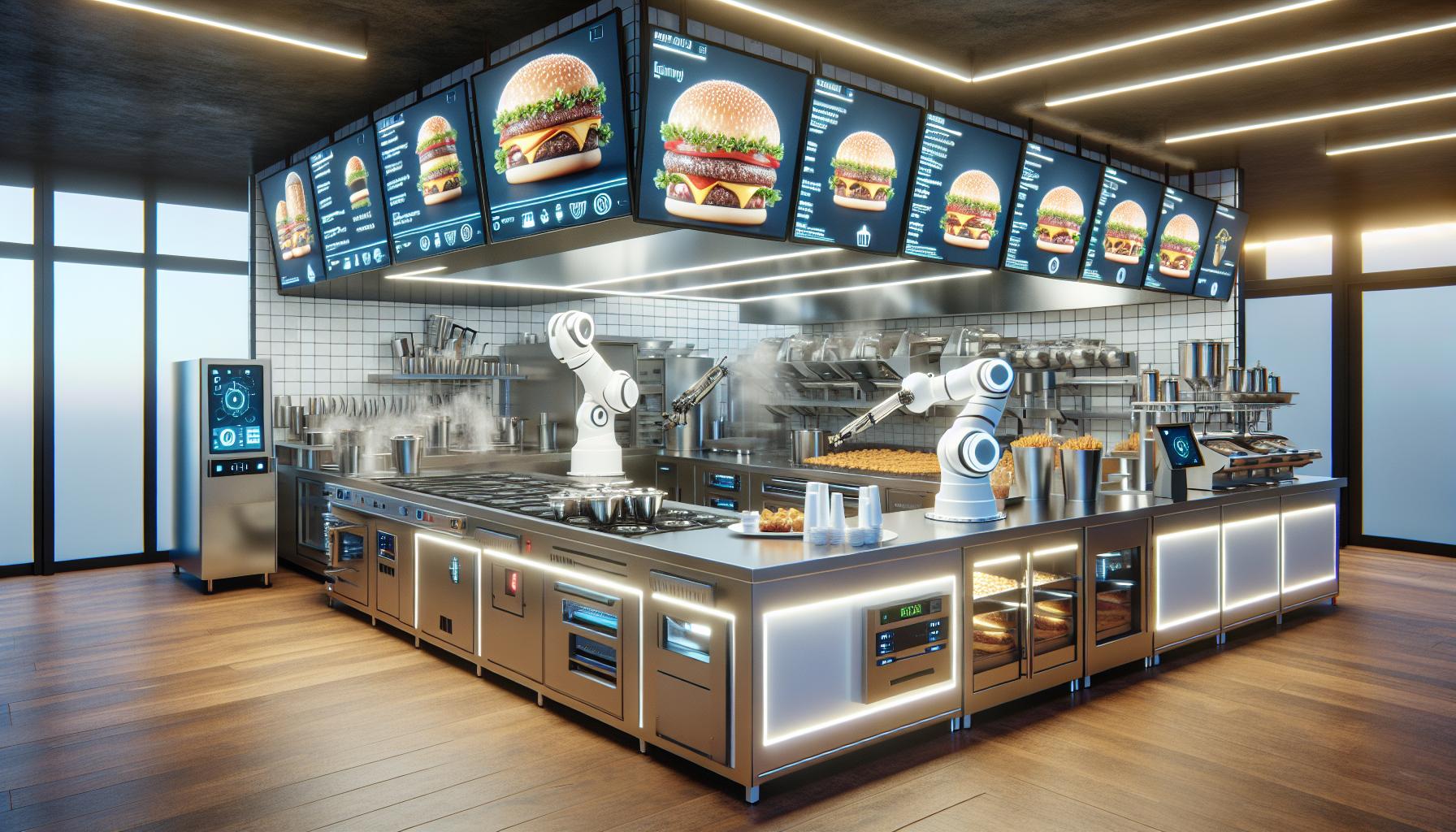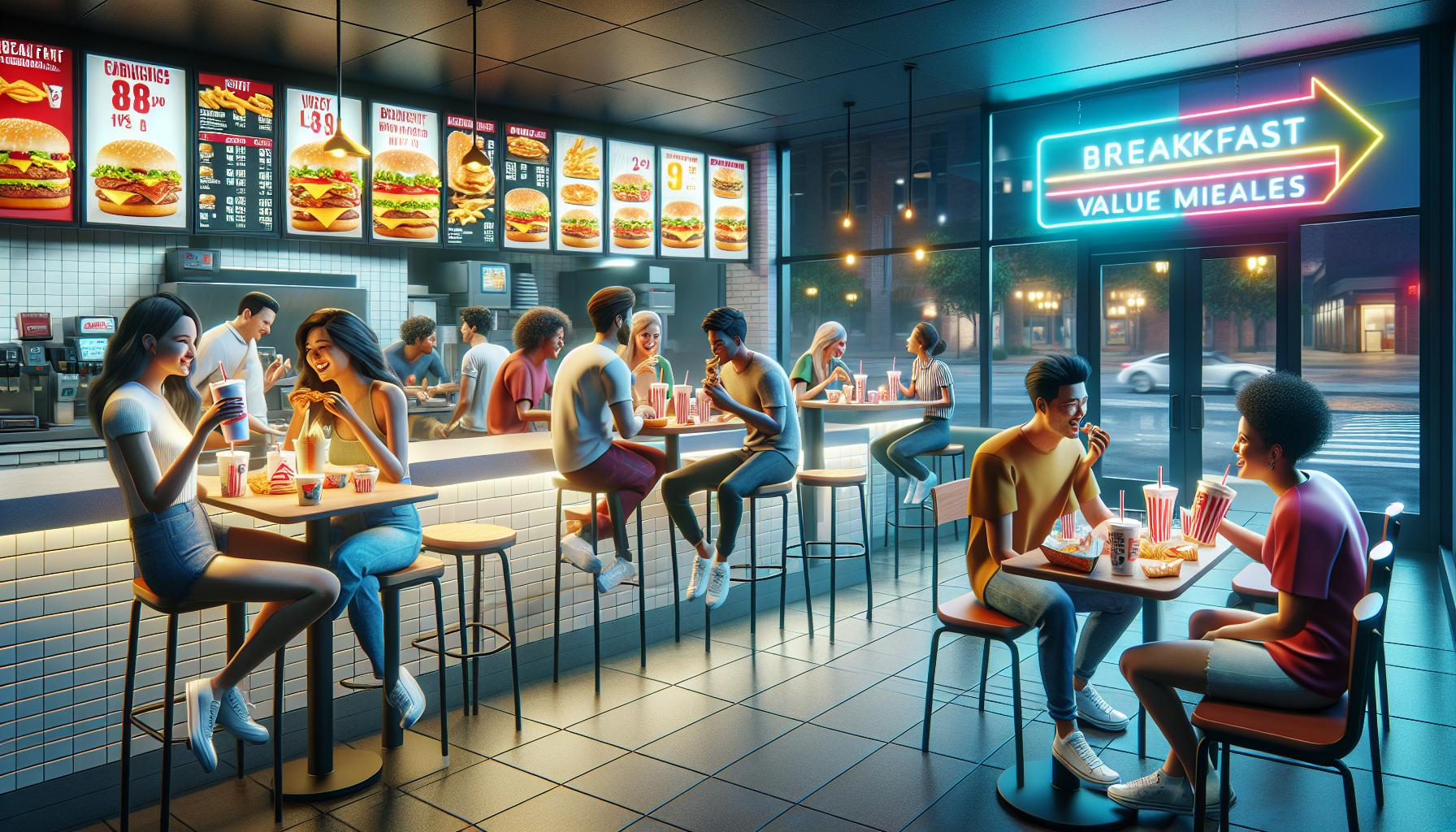The fast food industry is evolving faster than a burger flipper during rush hour. With consumer preferences shifting and technology reshaping how people order their favorite meals consumers now expect more than just quick service and value meals. From ghost kitchens to plant-based alternatives the industry’s landscape has transformed dramatically in recent years.
Digital innovation is leading the charge as mobile ordering artificial intelligence and contactless delivery become standard features rather than luxuries. Major chains are racing to adapt with many investing heavily in smart kitchen equipment automated ordering systems and sustainable packaging. They’re not just selling convenience anymore – they’re selling an experience that aligns with modern lifestyle demands and environmental consciousness.
Fast Food Industry Trends
Digital ordering transformed the Fast Food Industry Trends with 63% of consumers now preferring mobile ordering over traditional methods. Online food delivery platforms generated $150 billion in global revenue in 2022, marking a 300% increase from pre-pandemic levels.
Mobile Apps and Loyalty Programs
Fast Food Industry Trends chains leverage mobile apps to enhance customer engagement through personalized rewards programs. McDonald’s app users spend 20% more per order compared to non-app customers. Digital loyalty programs provide valuable customer data while offering targeted promotions based on ordering patterns. Major chains integrate features like mobile payment options, real-time order tracking and customizable menu items. Starbucks leads the industry with 31 million active rewards members generating 53% of company-owned store sales through their mobile app.
Third-Party Delivery Partnerships
Fast food brands partner with delivery platforms like DoorDash, Uber Eats and Grubhub to expand their reach. DoorDash controls 65% of the food delivery market share while processing 45% of all delivery orders. Integration with multiple delivery services increases order volume by an average of 32% per location. Restaurant chains optimize their menu offerings specifically for delivery with packaging designed to maintain food quality. Delivery sales account for 40% of total revenue at major quick-service restaurants, highlighting the critical role of third-party partnerships.
Plant-Based and Sustainable Menu Options

Fast food chains embrace sustainable practices through expanded plant-based offerings and eco-conscious packaging solutions. Major restaurants report a 35% increase in plant-based orders since 2020, reflecting growing consumer demand for environmentally responsible dining options.
Meatless Alternatives
Leading fast food chains partner with Beyond Meat and Impossible Foods to create signature meatless items. McDonald’s McPlant burger generates $186 million in annual sales across 600 locations. Burger King’s Impossible Whopper accounts for 12% of total Whopper sales. Plant-based options expand beyond burgers to include chicken alternatives, with KFC’s Beyond Fried Chicken selling out in 5 hours during its initial launch. Restaurant chains introduce dairy-free cheese options and egg substitutes in breakfast items, catering to diverse dietary preferences. Subway adds plant-based meatballs to their permanent menu, resulting in a 15% increase in new customer acquisition.
Eco-Friendly Packaging
Fast food restaurants transition to sustainable packaging materials, eliminating 8 million tons of plastic waste annually. Chains adopt biodegradable containers made from bamboo, sugarcane bagasse and recycled materials. McDonald’s implements fiber-based cups, reducing plastic usage by 45% across global operations. Taco Bell introduces compostable cutlery, saving 2 million pounds of plastic yearly. Pizza chains switch to corrugated boxes with 100% recycled content, decreasing carbon footprint by 25%. Starbucks launches reusable cup programs, offering customers $0.10 discounts for bringing personal containers. Major brands commit to achieving 100% recyclable packaging by 2025, investing $500 million in sustainable alternatives.
Automation and AI in Fast Food

Fast food automation technologies streamline operations through robotic systems and artificial intelligence. These innovations enhance efficiency while maintaining consistent food quality and reducing operational costs.
Robotic Food Preparation
Major fast food chains integrate robotic systems to automate repetitive kitchen tasks. Miso Robotics’ Flippy operates in 100+ White Castle locations, flipping burgers with 98% accuracy and operating 23 hours per day. Automated fryers manage oil temperatures precisely, cooking multiple items simultaneously while reducing waste by 35%. Pizza chains utilize robotic systems that spread sauce, add toppings and transfer pizzas to ovens at 3x the speed of human workers. These systems also monitor ingredient freshness, track inventory levels and maintain food safety standards through built-in temperature sensors.
Smart Drive-Thru Systems
AI-powered drive-thrus incorporate voice recognition technology to process orders with 95% accuracy. Dynamic digital menu boards adjust displays based on weather, time of day and inventory levels. License plate recognition systems identify repeat customers, displaying their previous orders and preferences automatically. McDonald’s implementation of AI drive-thrus reduces average order times by 30 seconds per transaction. Voice automation handles 70% of drive-thru orders without human intervention, allowing staff to focus on food preparation and quality control. These systems analyze traffic patterns to optimize queue management and reduce waiting times by 40%.
Focus on Breakfast and Late-Night Offerings

Fast food chains expand operating hours to capture additional revenue streams through dedicated breakfast menus and late-night promotions. Market research indicates a 45% increase in non-traditional dining hours since 2020, driving chains to adapt their service models.
All-Day Breakfast Menus
All-day breakfast options generate 25% of daily revenue for major fast food chains. McDonald’s pioneered this trend, reporting a 5% revenue increase after introducing all-day breakfast selections. Wendy’s breakfast menu, launched in 2020, contributes $1 billion in annual sales. Popular items include breakfast sandwiches, wraps, coffee drinks and portable options that cater to commuters. Drive-thru breakfast sales peak between 6-9 AM, accounting for 70% of morning transactions. Digital ordering platforms enable customers to schedule breakfast pickup times, reducing wait times by 40% during peak hours.
Late Night Value Deals
Late-night offerings target the 18-34 demographic, with 65% of this group dining between 10 PM and 2 AM. Taco Bell’s “Fourth Meal” promotion increases store traffic by 20% during late hours. Major chains offer discounted combo meals after 9 PM, generating $850 million in additional annual revenue. Digital exclusive deals through mobile apps drive 35% of late-night orders. Data shows that late-night menu items priced under $5 sell 3x more than regular-priced options. Delivery services report a 50% surge in orders during these extended hours, with an average order value of $15.
Health-Conscious Menu Innovation
Fast food chains integrate healthier menu items to meet rising consumer demand for nutritious options. Market research indicates a 65% increase in health-focused menu selections across major chains since 2021.
Low-Calorie Options
Leading fast food restaurants incorporate calorie-conscious menu items under 500 calories, featuring grilled proteins, salads, wraps. Panera Bread’s “400 & Under” menu generates 30% of total sales, while Chick-fil-A’s grilled nuggets contain 25g of protein with only 130 calories per serving. Major chains display calorie counts prominently on digital menu boards, resulting in a 15% increase in low-calorie item orders. Subway’s Fresh Fit menu accounts for 25% of total orders, featuring eight sandwiches under 400 calories.
Allergen-Free Choices
Fast food chains expand their allergen-free offerings through dedicated preparation areas and specialized ingredients. Chipotle’s allergen protocol includes separate cooking stations, resulting in a 40% increase in orders from customers with dietary restrictions. Five Guys offers lettuce wraps as gluten-free alternatives, while Shake Shack’s kitchen maintains strict cross-contamination prevention measures. Digital ordering platforms now include allergen filters, enabling customers to identify safe menu options easily. Restaurant chains report a 50% reduction in allergen-related incidents since implementing these protocols. Dairy-free alternatives from brands like Oatly appear on 80% of major chain menus.
Ghost Kitchens and Virtual Brands
Ghost kitchens represent a transformative shift in the fast food industry, operating without traditional storefronts to focus exclusively on delivery orders. These digital-first operations enable restaurants to maximize efficiency while reducing overhead costs by up to 70% compared to traditional locations.
Delivery-Only Concepts
Virtual brands operate solely through delivery apps, creating unique restaurant concepts without physical dining spaces. Major chains like Denny’s launched “The Burger Den” exclusively on delivery platforms, generating $500,000 in additional annual revenue per location. Virtual brands accommodate multiple cuisine types from a single kitchen, with companies like Virtual Dining Concepts operating 25 distinct brands across 1,500 locations. The flexibility allows restaurants to test new menu items with minimal risk, while data shows virtual brands achieve 28% higher profit margins compared to traditional restaurant models.
Dark Kitchen Operations
Dark kitchens optimize space utilization through specialized cooking stations that handle orders from multiple virtual brands simultaneously. CloudKitchens operates 5,000 dark kitchen facilities across 12 countries, each supporting 8-12 restaurant concepts in spaces under 300 square feet. Modern kitchen management systems track real-time order data, maintaining 99% order accuracy while reducing food waste by 35%. Automated inventory systems integrate with point-of-sale platforms to manage stock levels across multiple virtual brands, cutting operational costs by 25% through improved efficiency.
Digital Ordering and Delivering
The Fast Food Industry Trends stands at a pivotal moment of transformation driven by technology consumer preferences and sustainability initiatives. From ghost kitchens to AI-powered operations the sector continues to adapt and innovate. The surge in digital ordering plant-based options and automated solutions demonstrates the industry’s commitment to meeting modern demands.
As fast food chains embrace these changes they’re setting new standards for convenience efficiency and environmental responsibility. The future of fast food clearly lies in balancing traditional offerings with innovative solutions that cater to evolving consumer expectations. These developments signal a new era where success depends on staying ahead of technological advances while maintaining quality and sustainability.

